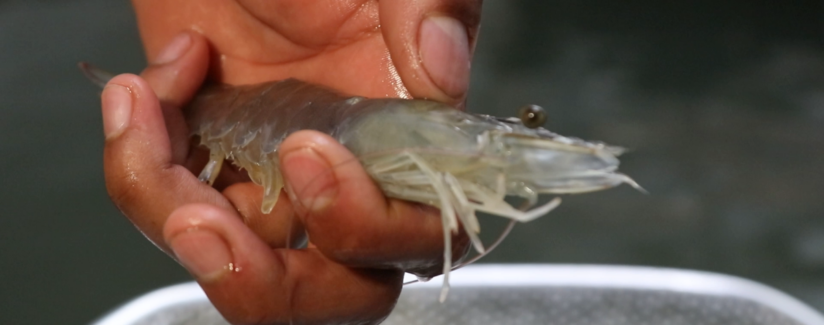
Hooked on Sustainable U.S. Aquaculture: TransparentSea Shrimp Farm
Cast aside your snorkel and flippers. This deep dive into U.S. aquaculture is virtual!
Join Best Food Facts as we tour TransparentSea shrimp farm with food blogger Courtney Paige of A Paige of Positivity. It’s part of our four-farm Hooked on Sustainable U.S. Aquaculture tour showcasing farmers’ commitment to sustainably raising home-grown, nutritious fish and seafood for the increasing number of Americans who crave it.
Let’s dive in at TransparentSea to see why U.S. aquaculture is making a big splash!
Raising local, sustainable, premium shrimp in an indoor farm in Downey, California – just south of bustling downtown Los Angeles – TransparentSea produces shrimp that’s as good for you as it is for the planet in a one-of-a-kind farming system.
“We converted this 18,000 square foot warehouse in Downey where we raise about 22 tons of shrimp every year and deliver it to restaurants throughout LA and Orange County,” said Kele Mkpado, TransparentSea facility manager. “Our shrimp doesn’t travel more than about 30 miles so restaurants get a clean, sustainable, antibiotic-free shrimp that they can plate about eight hours after it’s harvested.”
The shrimp are raised in water that’s recycled using a recirculating aquaculture system, also known as a RAS system.
“We have about 600,000 gallons of water that are being recycled 12-to-15 times a day,” said Kele. “It’s cleaned, sterilized and then sent back out to the shrimp tanks.”
That reduces TransparentSea’s impact on the environment and on the water supply, he said.
“Once this farm was filled up with water, we reuse 99.8% of the water that’s here,” said Kele.
The farm imports baby shrimp from a hatchery in Florida where the “genetics are some of the best in the world,” he said.
The babies spend two to three weeks in nursery tanks and then are moved to larger tanks that hold 30,000 to 40,000 shrimp.
TransparentSea doesn’t use antibiotics, which is a reflection of farming practices that result in healthy shrimp, said Kele. Among those practices is providing quality feed that includes a mix of plant protein such as soy, fish protein and antioxidants.
“Our whole goal here is to reduce the impact that we have on the environment, so being able to breed these in captivity and then do selective breeding to get the fastest growing, the most disease resistant shrimp,” he said. “The fact that we are removed from the ocean, we want to make sure that it stays that way and that we’re not just continuously pulling animals out of the ocean.”
The goal of U.S. aquaculture, he said, is to provide fresh and clean fish and seafood to the consumer.
“TransparentSea was awesome, and it was so cool to see an indoor aquaculture facility, especially in the city of LA,” said Courtney. “It’s something you might not expect. I can’t wait to make more recipes with shrimp and bring them to our consumers.”
Catch the other farms on the tour!
Riverence Rainbow and Steelhead Trout Farm
Rushing Waters Rainbow Trout Farm
Want to learn more? Check out the Best Food Facts aquaculture blog series!
Is Aquaculture a Sustainable Way to Produce Fish and Seafood?
How Does Aquaculture Affect Water Supplies?
Are Farm-Raised Fish and Seafood Safe to Eat?
Are Farm-Raised Fish as Nutritious as Wild-Caught Fish?
The Hooked on Sustainable U.S. Aquaculture tour was sponsored by BestFoodFacts.org and the United Soybean Board.

























